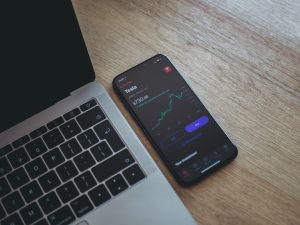Forex trading is a lucrative market that attracts people from all walks of life. However, it can be complex and intimidating for beginners. Therefore, learning forex requires time, dedication, and effort. This article will provide a step-by-step guide on how to learn forex.
Step 1: Understand the Basics
The first step in learning forex is to understand the basics. Forex trading involves buying and selling currencies. The value of currencies fluctuates based on various factors such as political events, economic data, and market sentiment. Therefore, forex traders make money by buying currencies when their value is low and selling them when their value is high.
In addition, forex trading involves trading currency pairs. A currency pair is a set of two currencies that are traded against each other. For instance, the EUR/USD currency pair represents the exchange rate between the Euro and the US Dollar.
Step 2: Choose a Broker
After understanding the basics, the next step is to choose a forex broker. A forex broker is a financial institution that provides a platform for traders to buy and sell currencies. When selecting a broker, traders should consider factors such as regulation, customer support, trading platforms, and fees.
Step 3: Open a Demo Account
Before trading with real money, it is essential to practice trading with a demo account. A demo account allows traders to trade with virtual money without risking their capital. It provides an opportunity to learn how to use the trading platforms, understand the market, and test trading strategies.
Step 4: Learn Technical Analysis
Technical analysis is the study of past market data to predict future price movements. It involves using charts and technical indicators to identify trends, support and resistance levels, and entry and exit points. Traders should learn how to use various technical indicators such as moving averages, Relative Strength Index (RSI), and Bollinger Bands.
Step 5: Learn Fundamental Analysis
Fundamental analysis involves analyzing economic data and news events to predict market movements. Traders should follow economic indicators such as Gross Domestic Product (GDP), inflation, and unemployment rates. They should also monitor news events such as central bank policies, geopolitical events, and natural disasters.
Step 6: Develop a Trading Plan
A trading plan is a set of rules that a trader uses to guide their trading decisions. It should include entry and exit points, risk management strategies, and trading goals. Traders should also consider their risk tolerance and trading style when developing a trading plan.
Step 7: Practice Trading with Real Money
After practicing with a demo account, traders can start trading with real money. However, traders should start with a small amount of capital and gradually increase it as they gain experience. They should also stick to their trading plan and avoid emotional trading.
Conclusion
In conclusion, learning forex requires time, dedication, and effort. Traders should start by understanding the basics, choosing a broker, opening a demo account, learning technical and fundamental analysis, developing a trading plan, and practicing with real money. Forex trading can be profitable but also risky; therefore, traders should always manage their risk and avoid emotional trading.





